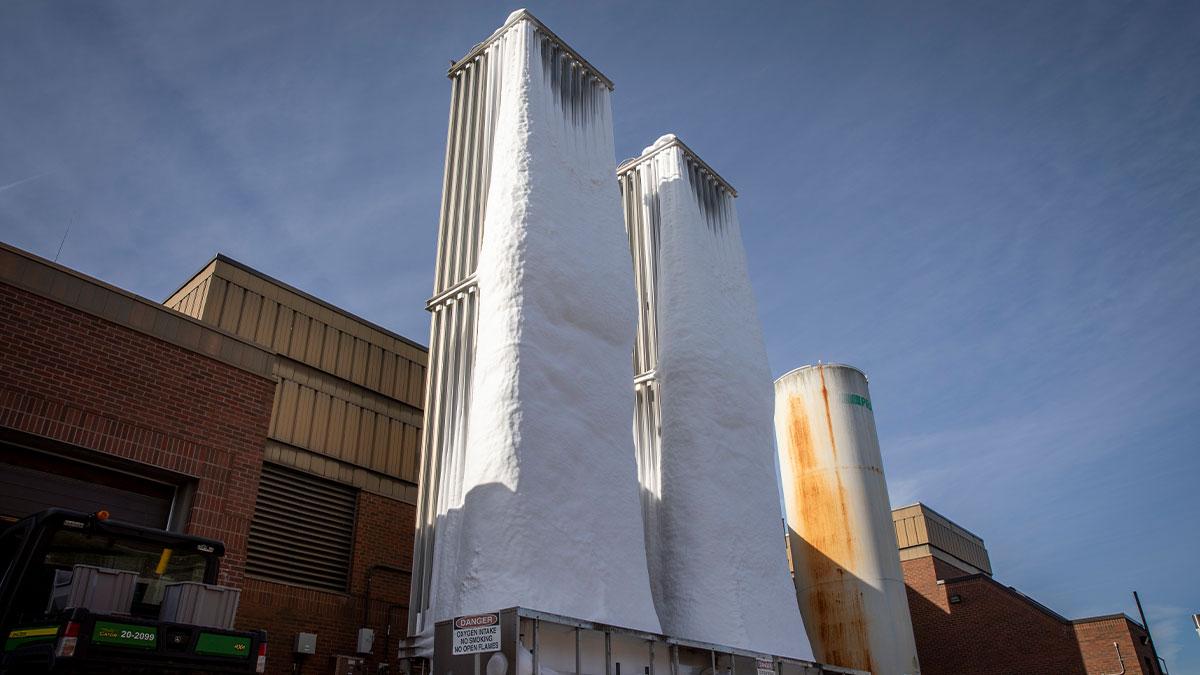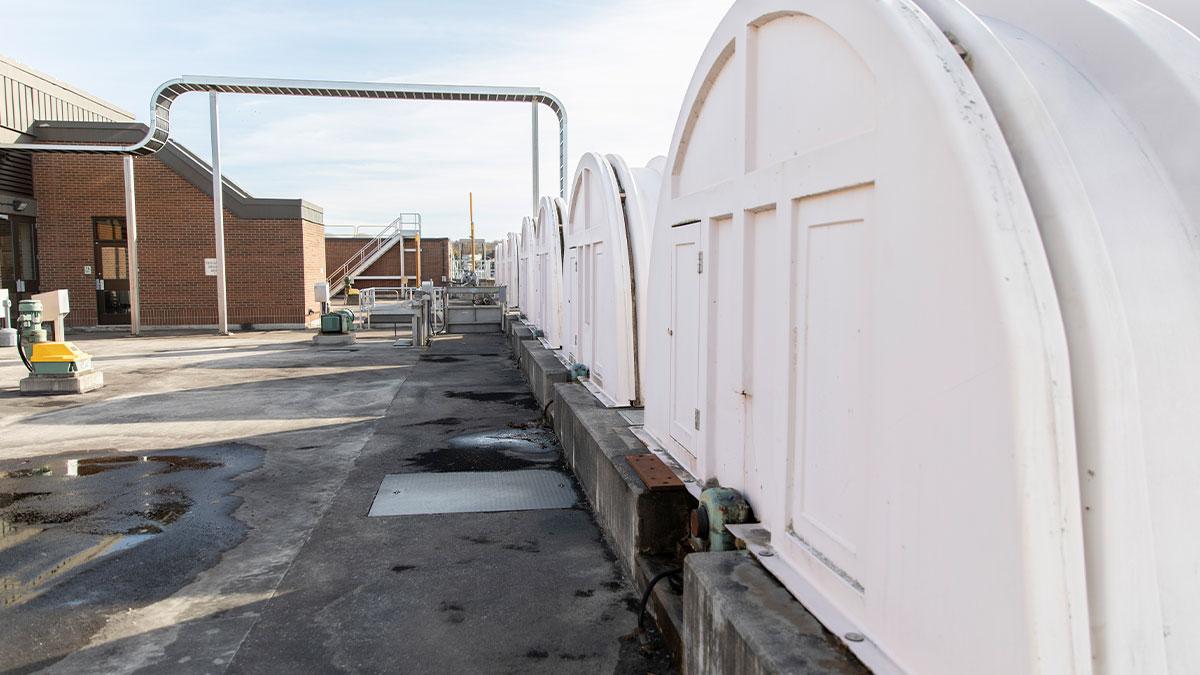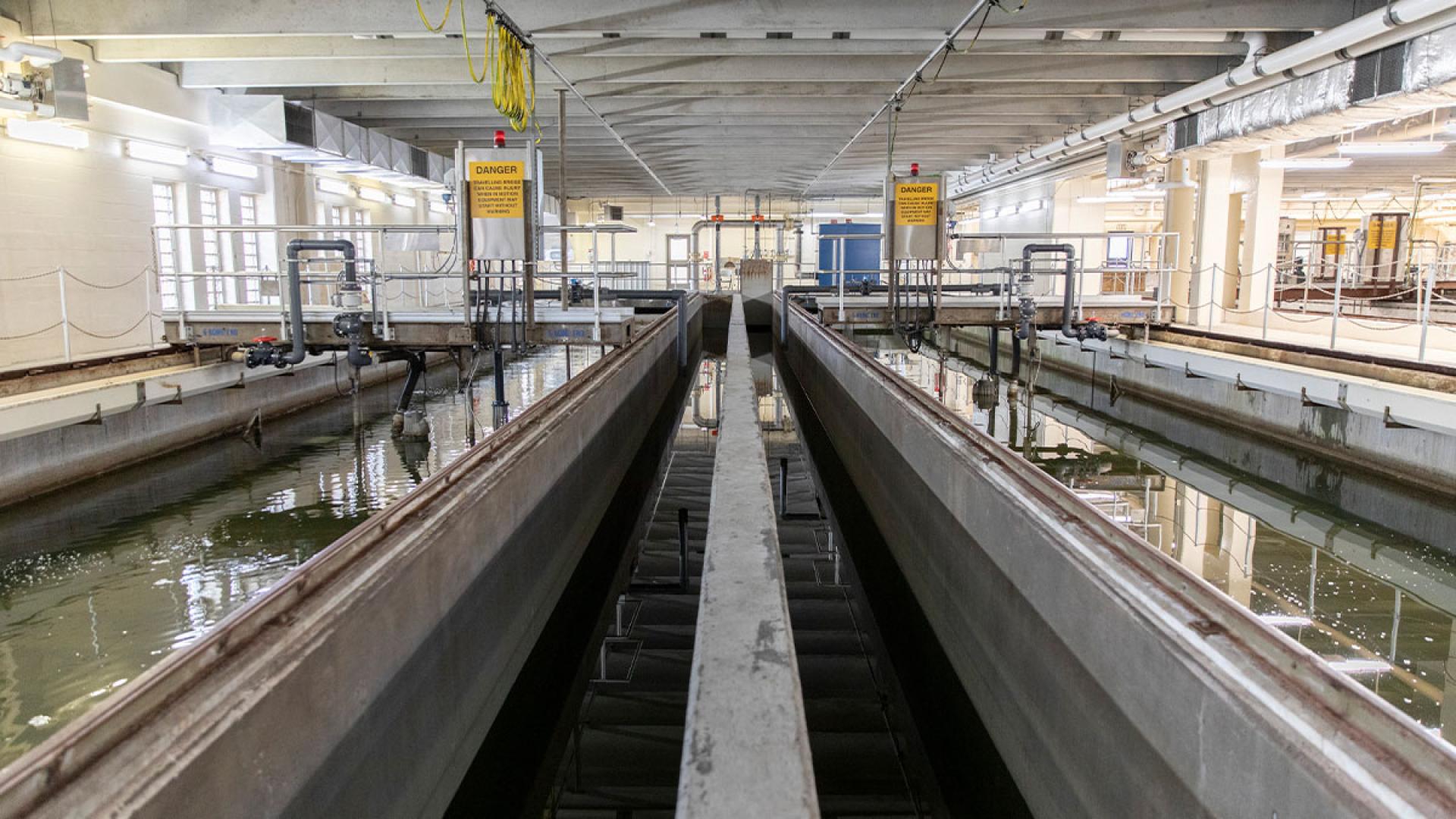The City owns and operates a Wastewater Treatment Facility (WwTF), which can treat up to 76 million litres of wastewater every day.
Wastewater is the mixture of liquid and solid materials that residents and businesses flush down toilets and empty down sinks and drains. This material is directed to the WwTF through a network of pipes that make up the City’s sanitary sewer system.
Wastewater treatment is a series of physical, chemical, and biological process that remove contaminants, pollutants, and other undesirable materials from the water. Wastewater treatment creates clean effluent water and other beneficial resources from the wastes of residents and businesses in our community.
Disconnect to Protect!
The City's wastewater treatment plant is being overloaded and it’s costing you money! Tax payers are paying a lot of extra money to treat already clean water. Learn about the Disconnect to Protect Rebate Program.
Wastewater Treatment Facility (WwTF)
The City currently is undertaking a project to retrofit a portion of the WwTF to meet new Provincial regulations.
The WwTF is a tertiary treatment plant that uses ultra violet disinfection to treat all sewage before sending it into Lake Simcoe. The facility receives domestic, commercial and industrial wastewater and provides a level of treatment to meet the water quality standards of Lake Simcoe. Overall, the entire treatment process can be described at the transformation of wastewater into three useful products:
- Treated effluent
- An agricultural crop fertilization supplement
- Energy, in the form of heat and electricity
The City maintains high standards in wastewater treatment to ensure there is minimum effect on Lake Simcoe. Wastewater Operations staff monitor systems and processes 24/7 to ensure the WwTF is continuously operated safely and efficiently. All efforts are made to minimize the impact on Lake Simcoe and to remove any risk to public health, while always working to ensure that compliance with all local, Provincial, and Federal regulations is maintained at all times.




Biosolids
Sewage biosolids are nutrient-rich materials that result from the treatment of municipal wastewater. The City uses anaerobic digestion to stabilize biosolids; once stabilized, they can be land applied in liquid form. Biosolids contain nitrogen, phosphorus and organic matter as well as essential micro-nutrients such as copper, iron, molybdenum and zinc, all of which are important to improve or maintain soil quality. When treated and processed, these residuals are recycled and applied as fertilizer to improve and maintain productive soils and stimulate plant growth.
Wastewater Biosolids Optimization
In 2024, the Wastewater Operations Branch conducted a three-week pilot of a dewatering centrifuge. This technology removes water from the biosolids produced during wastewater treatment, creating a more concentrated product, which reduces the amount of trucking required to utilize the biosolids. See the below infographic for details on the process.

